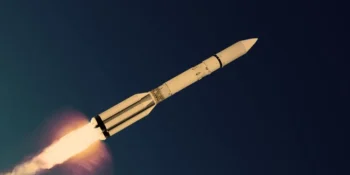Secure software development has become a cornerstone of cybersecurity in the era of digital transformation. This article delves into its significance, exploring its key principles, the challenges developers face, and strategies for creating robust, resilient, and secure applications.
Significance of Secure Software Development
Secure software development is crucial for mitigating cybersecurity risks and safeguarding digital assets. Several key factors underscore the significance of secure software development:
Protection Against Cyber Threats
In an interconnected world, applications are prime targets for cyber threats. Secure software development practices help fortify applications against various cyberattacks, including but not limited to injection attacks, cross-site scripting (XSS), and SQL injection.
Data Privacy and Compliance
As data breaches continue to make headlines, ensuring data privacy has become a top priority. Secure software development helps organizations comply with data protection regulations, such as the General Data Protection Regulation (GDPR), by embedding privacy and security measures into the application development lifecycle.
Preserving Reputational Integrity
Security breaches result in financial losses and tarnish organizations’ reputations. Organizations can prevent breaches, maintain customer trust, and preserve their reputational integrity by prioritizing secure software development.
Minimizing Post-Release Vulnerabilities
Addressing security concerns during development reduces the likelihood of discovering vulnerabilities post-release. This proactive approach minimizes the need for patching and updates after deployment, enhancing applications’ overall security posture.
Key Principles of Secure Software Development
Secure software development is guided by key principles that ensure the integration of security measures throughout the development lifecycle:
Threat Modeling
Threat modeling involves identifying potential security threats and vulnerabilities in the early stages of development. By understanding potential risks, developers can implement countermeasures to mitigate these threats effectively.
Secure Coding Practices
Adhering to secure coding practices is fundamental to building secure software. Developers should follow coding guidelines that prevent common vulnerabilities, such as input validation errors, buffer overflows, and insecure dependencies.
Authentication and Authorization
Implementing robust authentication and authorization mechanisms is essential to control access to sensitive data and functionalities. Secure software development includes features like multi-factor authentication and proper user authorization protocols.
Data Encryption
Encrypting sensitive data in transit and at rest is crucial to secure software development. Encryption safeguards data from unauthorized access and ensures the exposed information remains unreadable even if a breach occurs.
Regular Security Testing
Integrating regular security testing into the development process helps identify and address vulnerabilities before deployment. Techniques like static analysis, dynamic analysis, and penetration testing are employed to assess the software’s security posture.
Continuous Monitoring
Implementing continuous monitoring allows developers to detect and respond to security incidents promptly. Developers can quickly identify potential security breaches by monitoring for unusual activities and anomalies.
Challenges in Secure Software Development
Despite the importance of secure software development, developers face several challenges in implementing robust security measures:
Time and Resource Constraints
Developers often work under tight deadlines and resource constraints, making it challenging to allocate sufficient time and resources for thorough security assessments and testing.
Lack of Security Expertise
Not all development teams possess specialized security expertise. The shortage of skilled cybersecurity professionals can hinder the implementation of effective security practices during the development process.
Evolving Threat Landscape
The dynamic nature of cyber threats requires constant adaptation of security measures. Developers must stay informed about the latest threats and vulnerabilities to ensure their applications remain resilient.
Balancing Functionality and Security
Implementing new features and ensuring robust security often create tension. Striking a balance between functionality and security is crucial to avoid compromising one for the other.
Strategies for Effective Secure Software Development
To overcome the challenges and build secure applications, developers can adopt various strategies:
Integration of Security into Development Lifecycles
Embedding security into the development lifecycle ensures that security measures are not an afterthought. Adopting methodologies like DevSecOps integrates security practices seamlessly into the development process.
Developer Training and Awareness
Providing developers with ongoing training and awareness programs enhances their understanding of security best practices. Well-informed developers are more likely to proactively raise concerns during development.
Use of Secure Coding Tools
Leveraging automated secure coding tools helps identify and rectify security issues in the codebase. These tools can analyze code for vulnerabilities, enforce coding standards, and recommend secure coding practices.
Regular Security Audits and Reviews
Regular security audits and code reviews ensure that applications adhere to security standards. Independent security assessments help identify potential vulnerabilities and areas for improvement.
Collaboration with Security Experts
Collaborating with cybersecurity experts and incorporating their insights into the development process strengthens the overall security posture. This collaboration ensures that applications undergo thorough security scrutiny from professionals with specialized expertise.
Conclusion
Secure software development is not just a necessity; it is a fundamental responsibility in an era where cyber threats are prevalent. By adhering to key principles, addressing challenges, and adopting effective strategies, developers can contribute to building digital fortresses that withstand the ever-evolving cybersecurity landscape. The significance of secure software development extends beyond individual applications; it contributes to the overall resilience of digital ecosystems. As organizations continue to innovate and embrace digital transformation, prioritizing secure software development practices remains paramount to safeguarding data, preserving trust, and ensuring a secure digital future.












